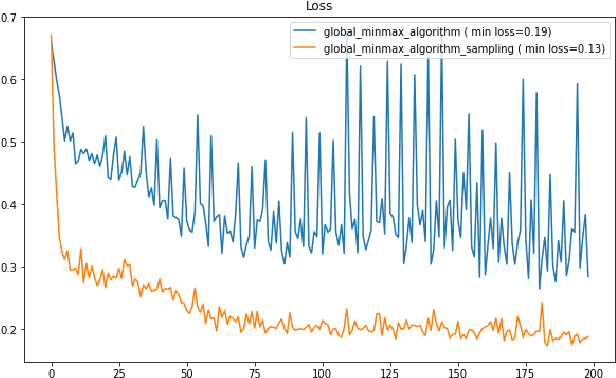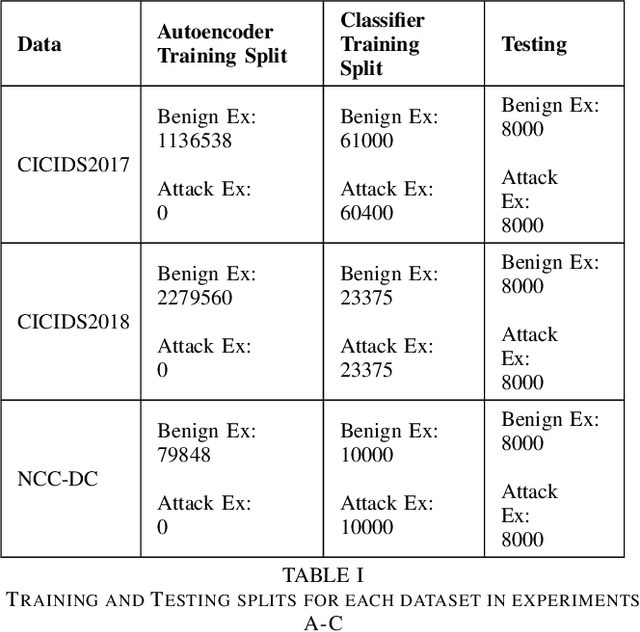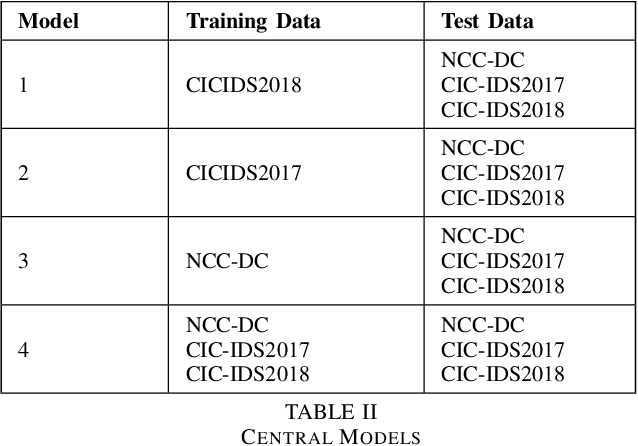Penjo Rebelo
Anomaly Detection via Federated Learning
Oct 12, 2022



Abstract:Machine learning has helped advance the field of anomaly detection by incorporating classifiers and autoencoders to decipher between normal and anomalous behavior. Additionally, federated learning has provided a way for a global model to be trained with multiple clients' data without requiring the client to directly share their data. This paper proposes a novel anomaly detector via federated learning to detect malicious network activity on a client's server. In our experiments, we use an autoencoder with a classifier in a federated learning framework to determine if the network activity is benign or malicious. By using our novel min-max scalar and sampling technique, called FedSam, we determined federated learning allows the global model to learn from each client's data and, in turn, provide a means for each client to improve their intrusion detection system's defense against cyber-attacks.
NER Models Using Pre-training and Transfer Learning for Healthcare
Oct 23, 2019



Abstract:In this paper, we present our approach to extract structured information from unstructured Electronic Health Records (EHR) [2] to study adverse drug reactions on patients, due to chemicals in their products. Our solution uses a combination of Natural Language Processing (NLP) techniques and a web-based annotation tool to optimize the performance of a custom Named Entity Recognition (NER) [1] model trained on a limited amount of EHR training data. We showcase a combination of tools and techniques leveraging the recent advancements in NLP aimed at targeting domain shifts by applying transfer learning and language model pre-training techniques [3]. We present a comparison of our technique to the base models available and show the effective increase in performance of the NER model and the reduction in time to annotate data. A key observation of the results presented is that the F1 score of model (0.734) trained with our approach with just 50% of available training data outperforms the F1 score of the blank spaCy model (0.704) trained with 100% of the available training data. We also demonstrate an annotation tool to minimize domain expert time and the manual effort required to generate such a training dataset. Further, we plan to release the annotated dataset as well as the pre-trained model to the community to further research in medical health records.
 Add to Chrome
Add to Chrome Add to Firefox
Add to Firefox Add to Edge
Add to Edge